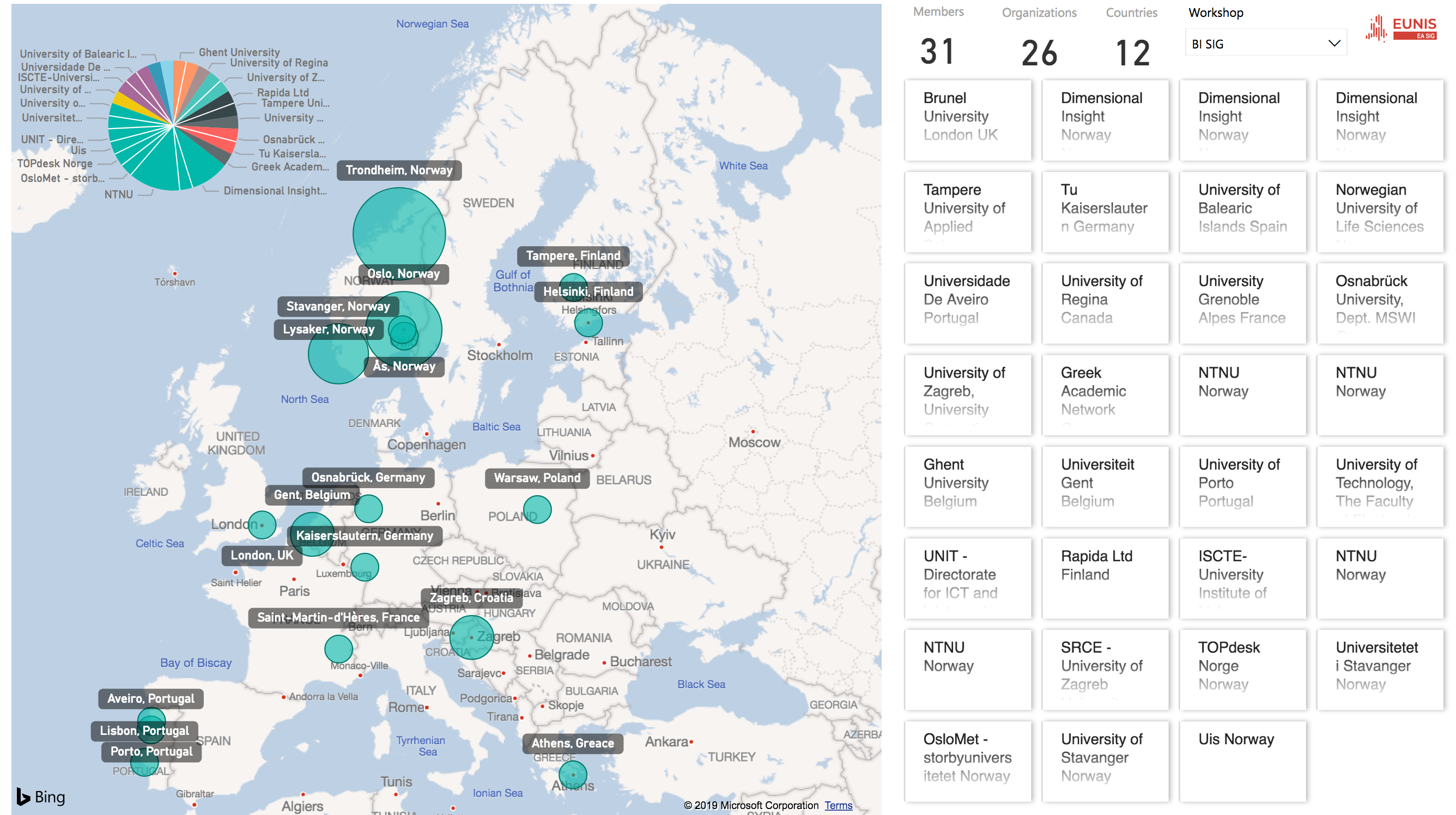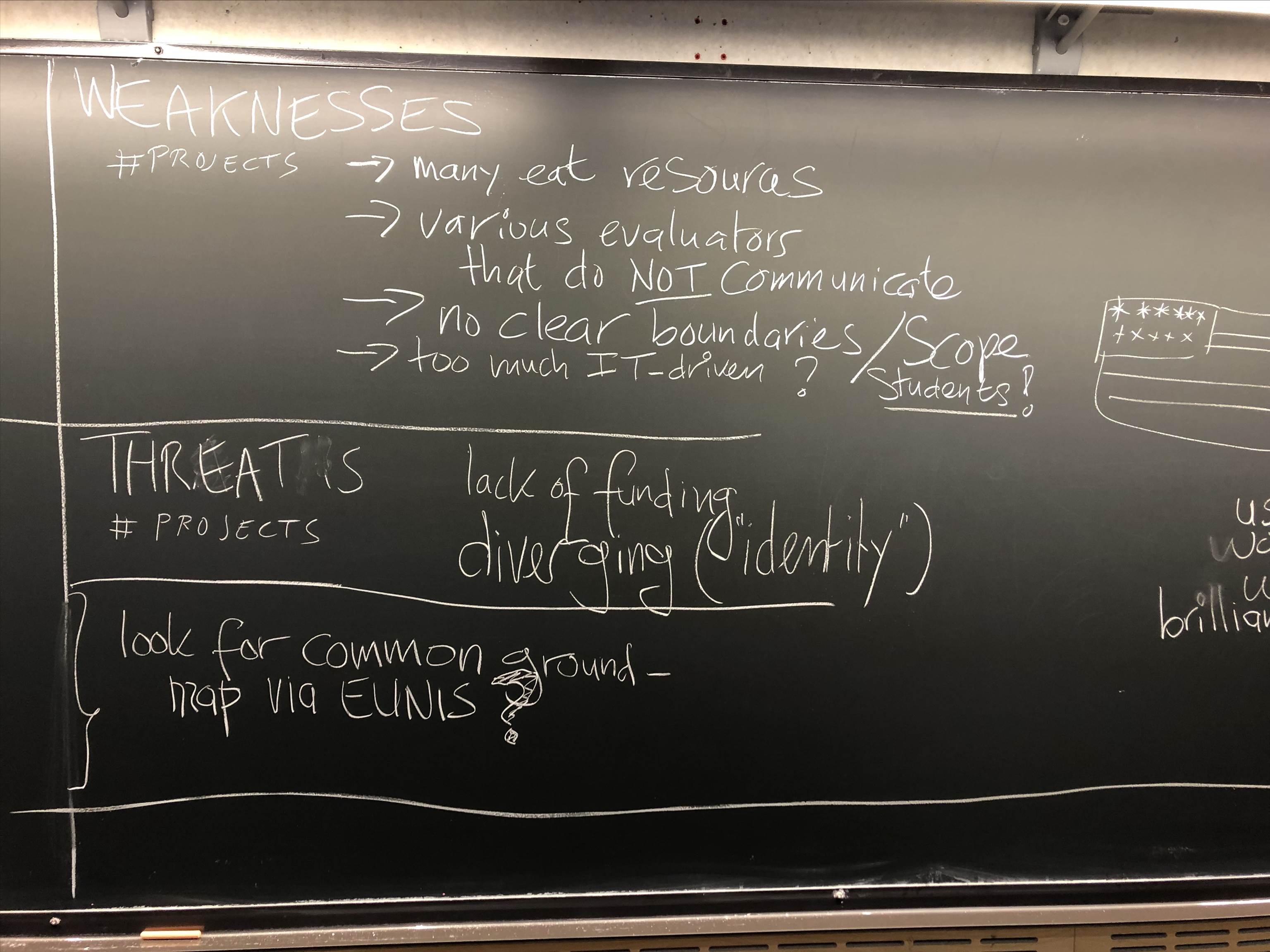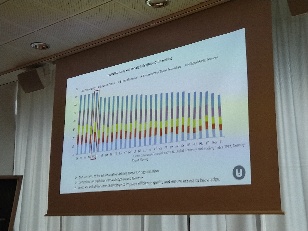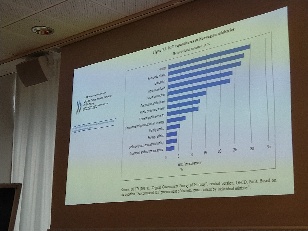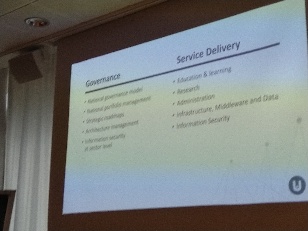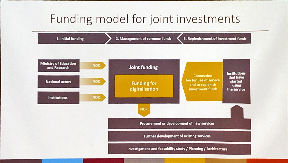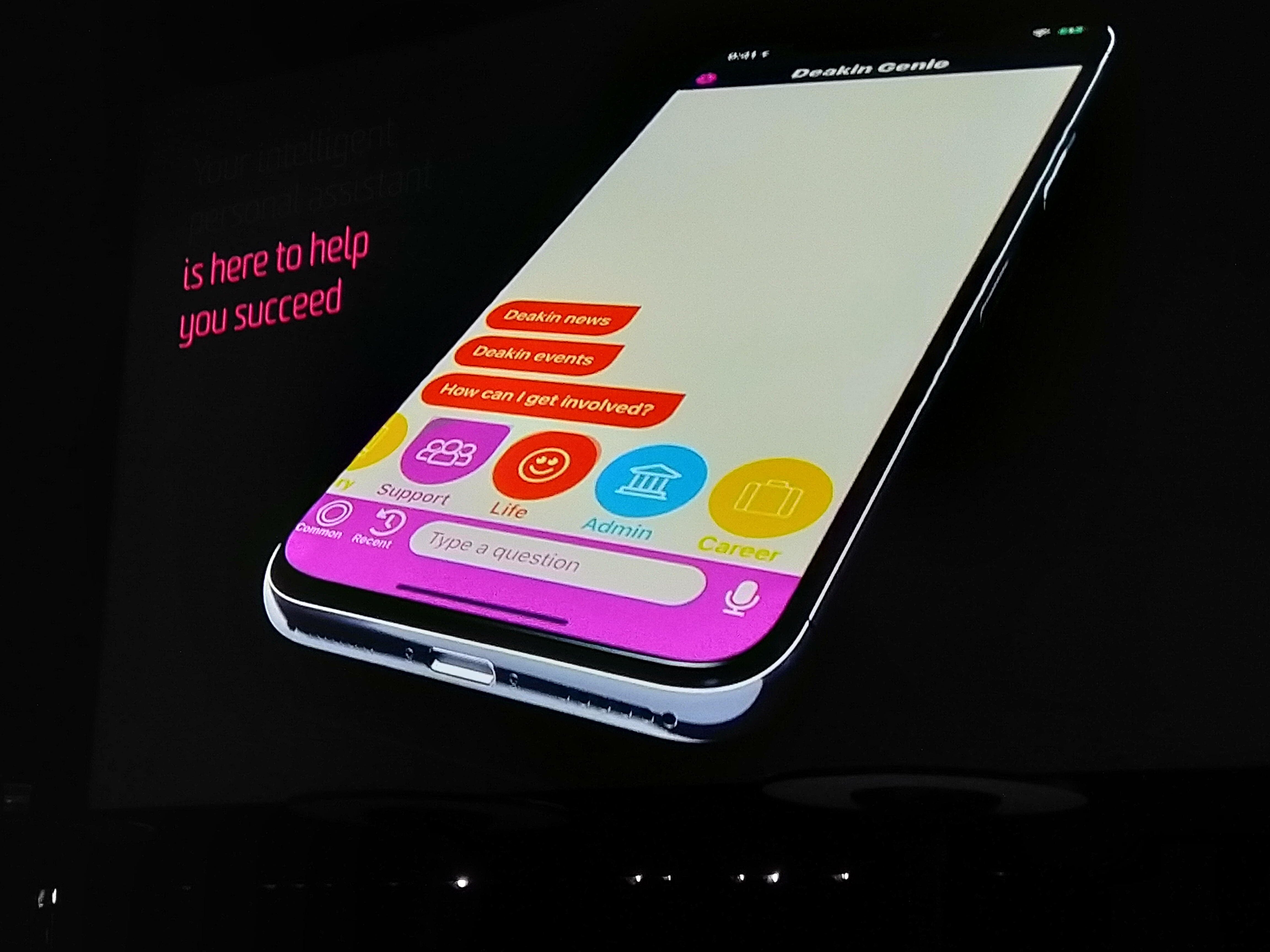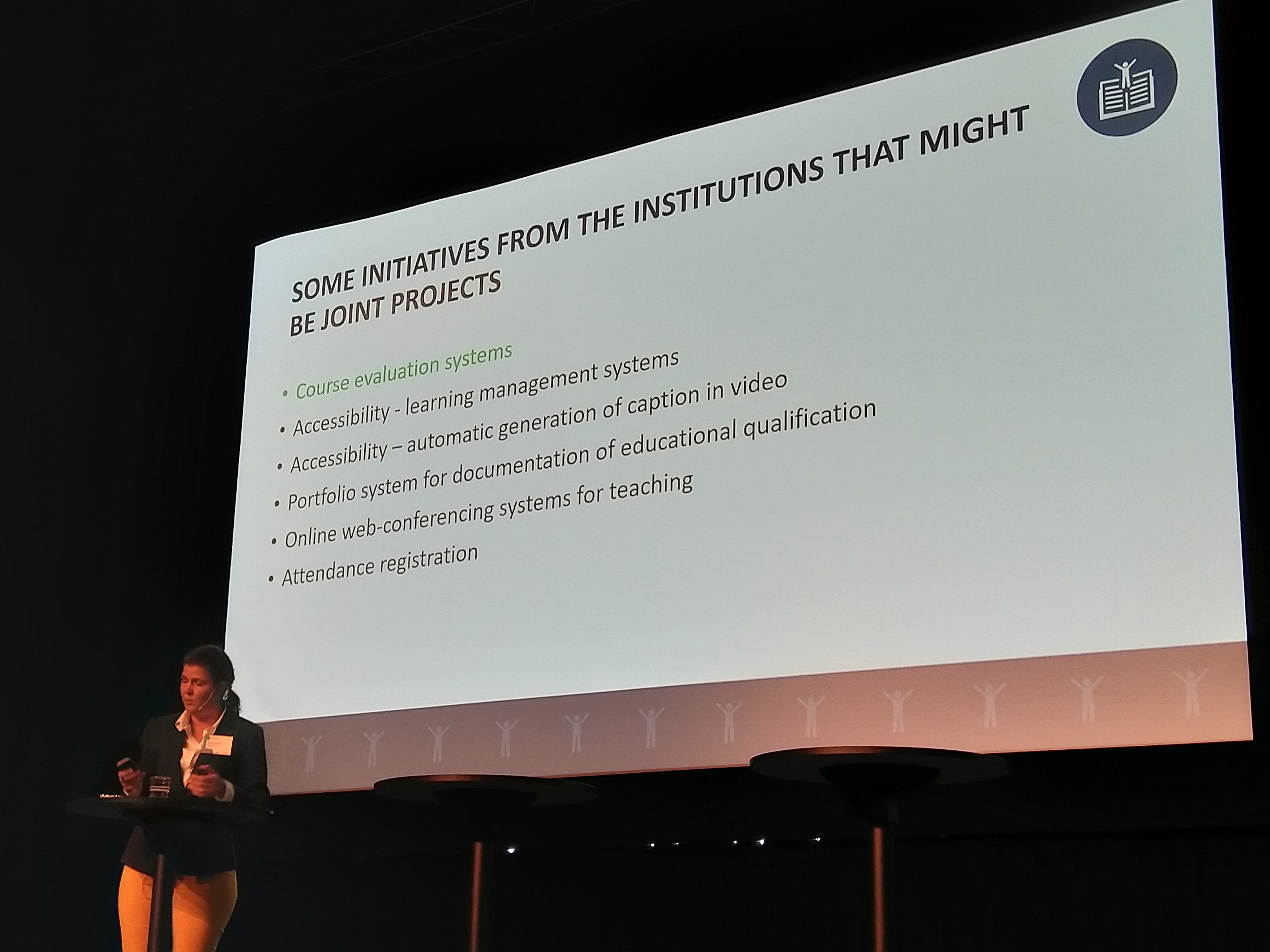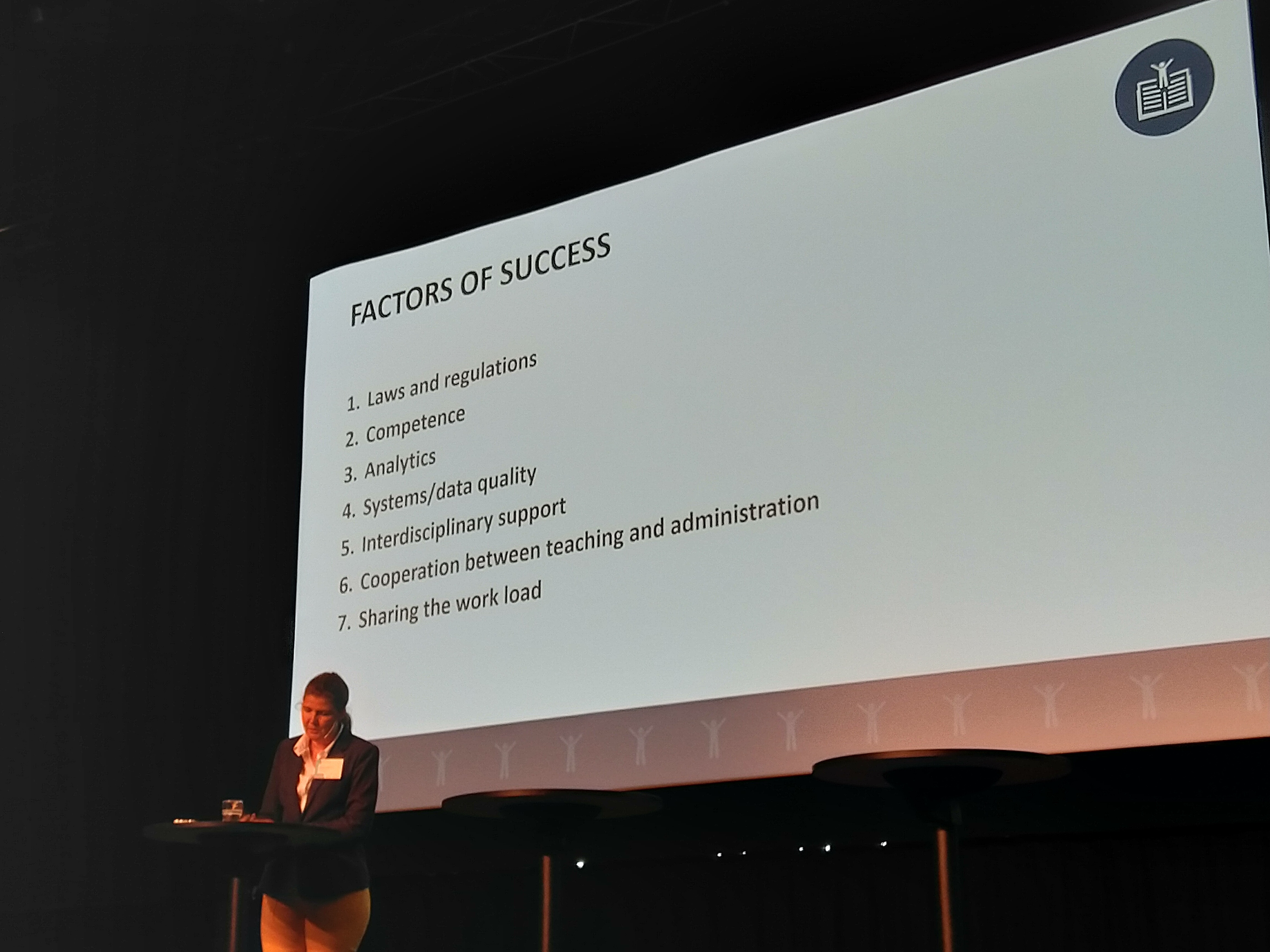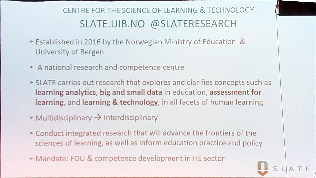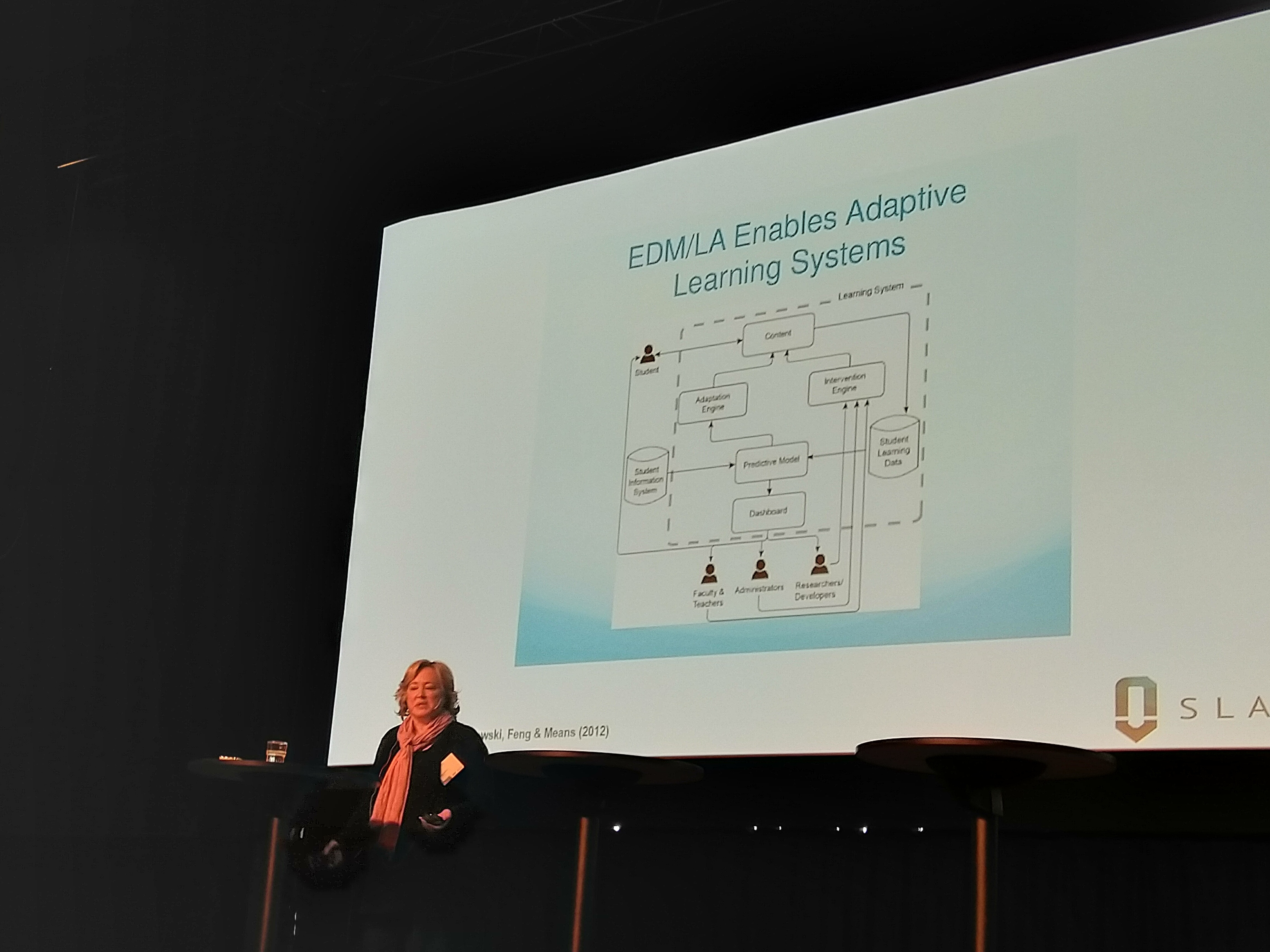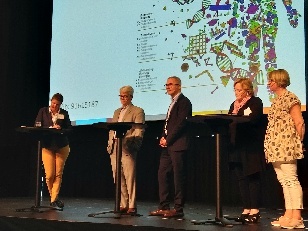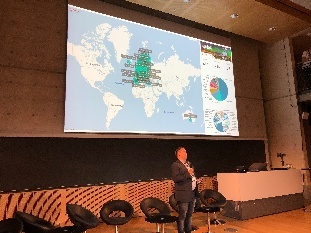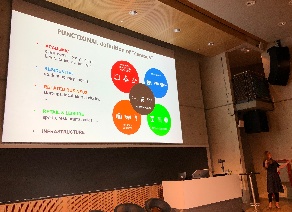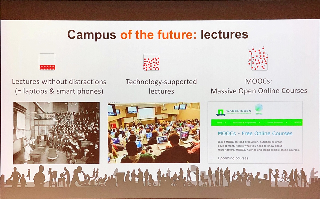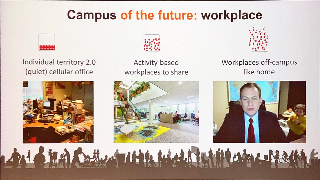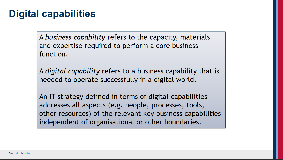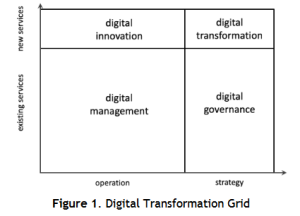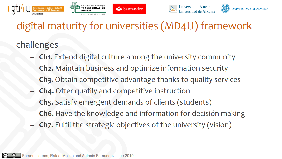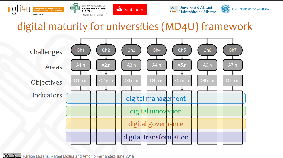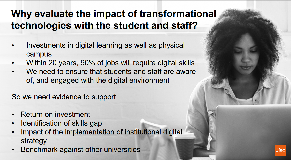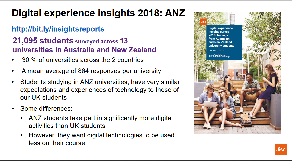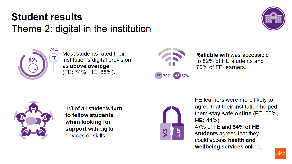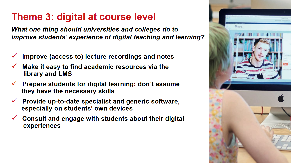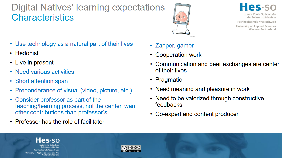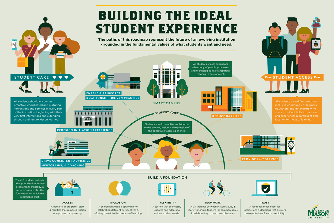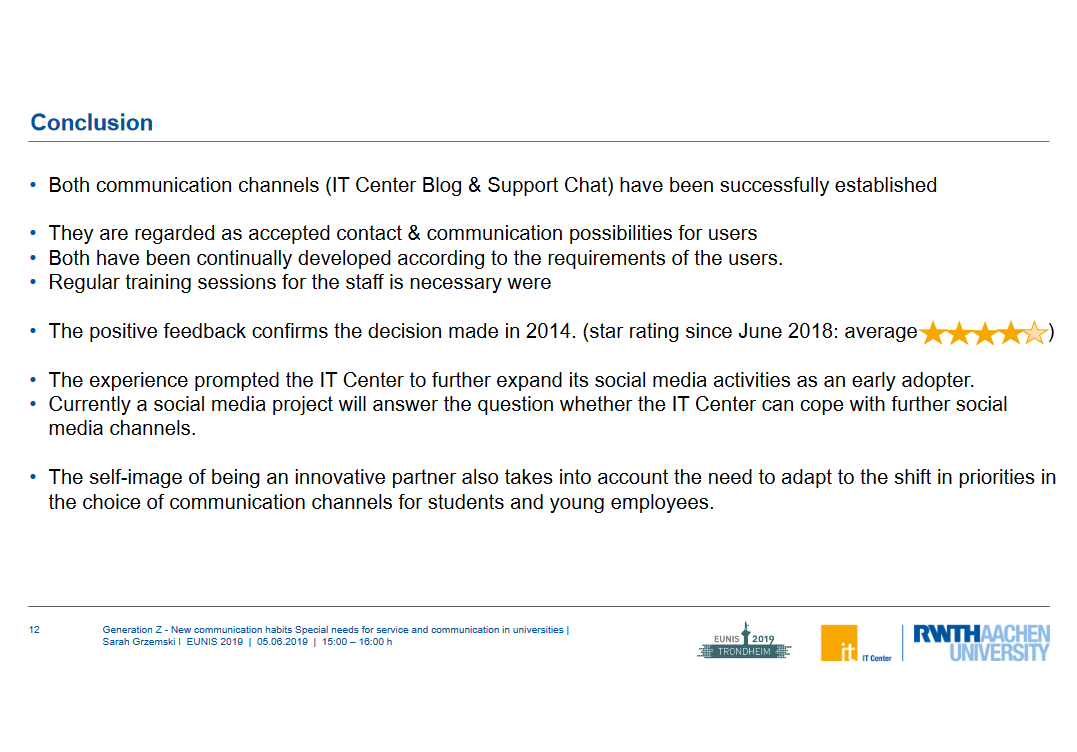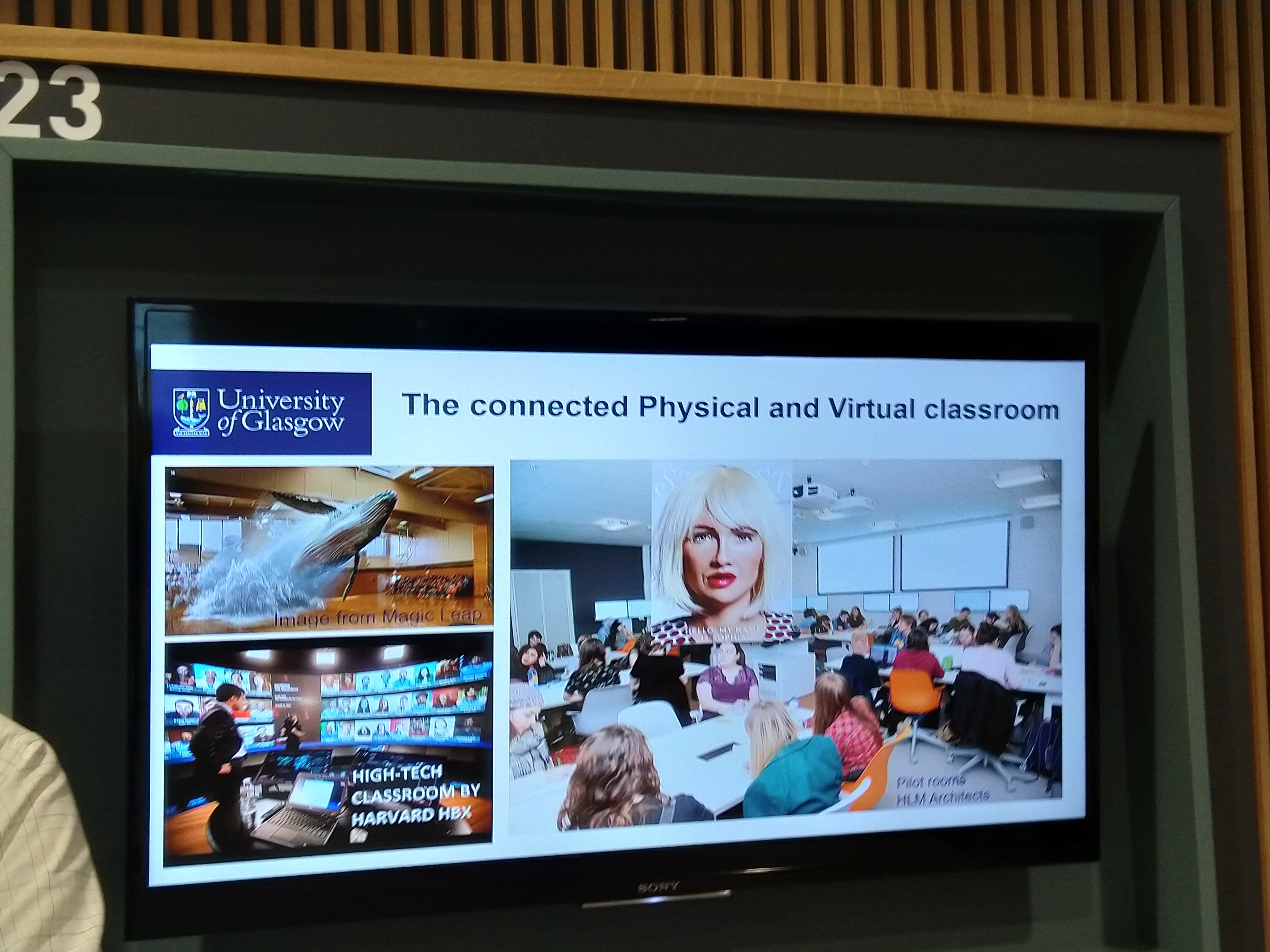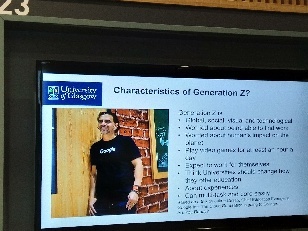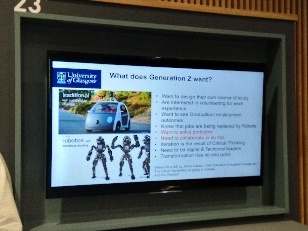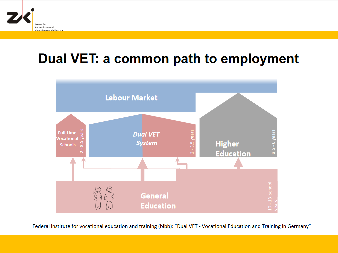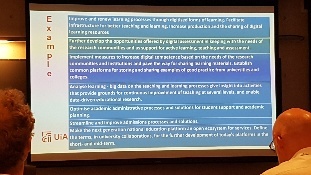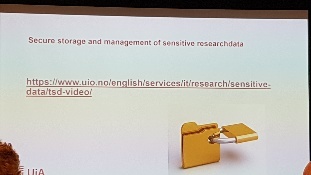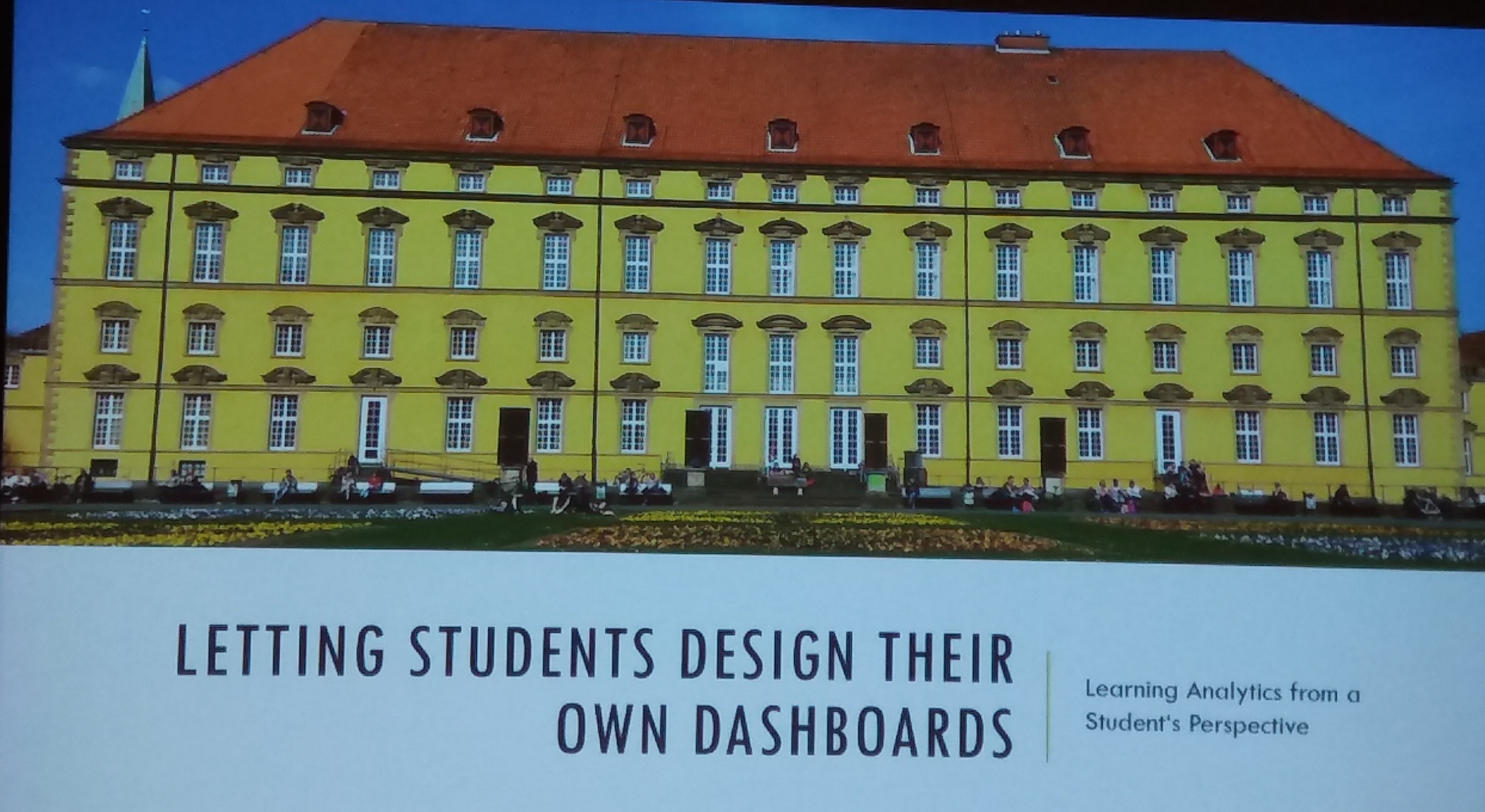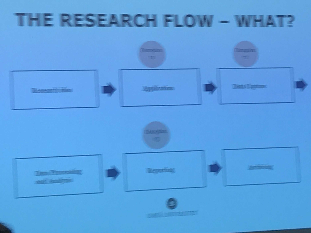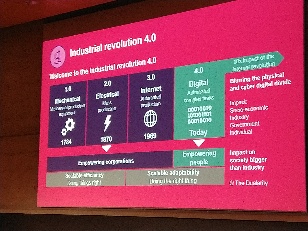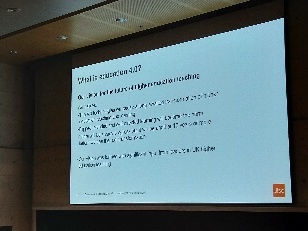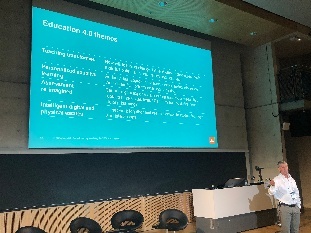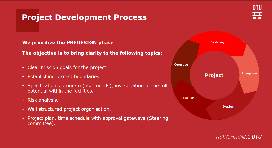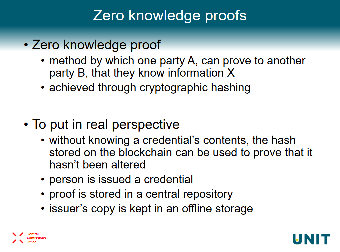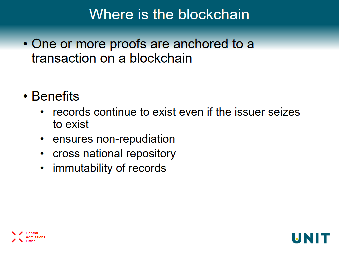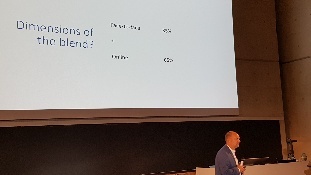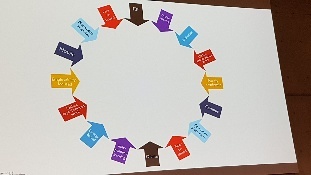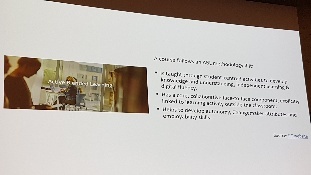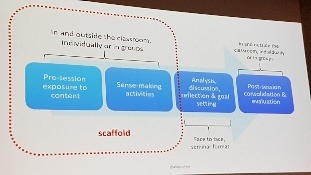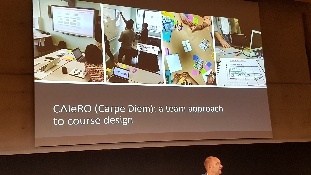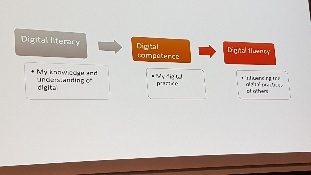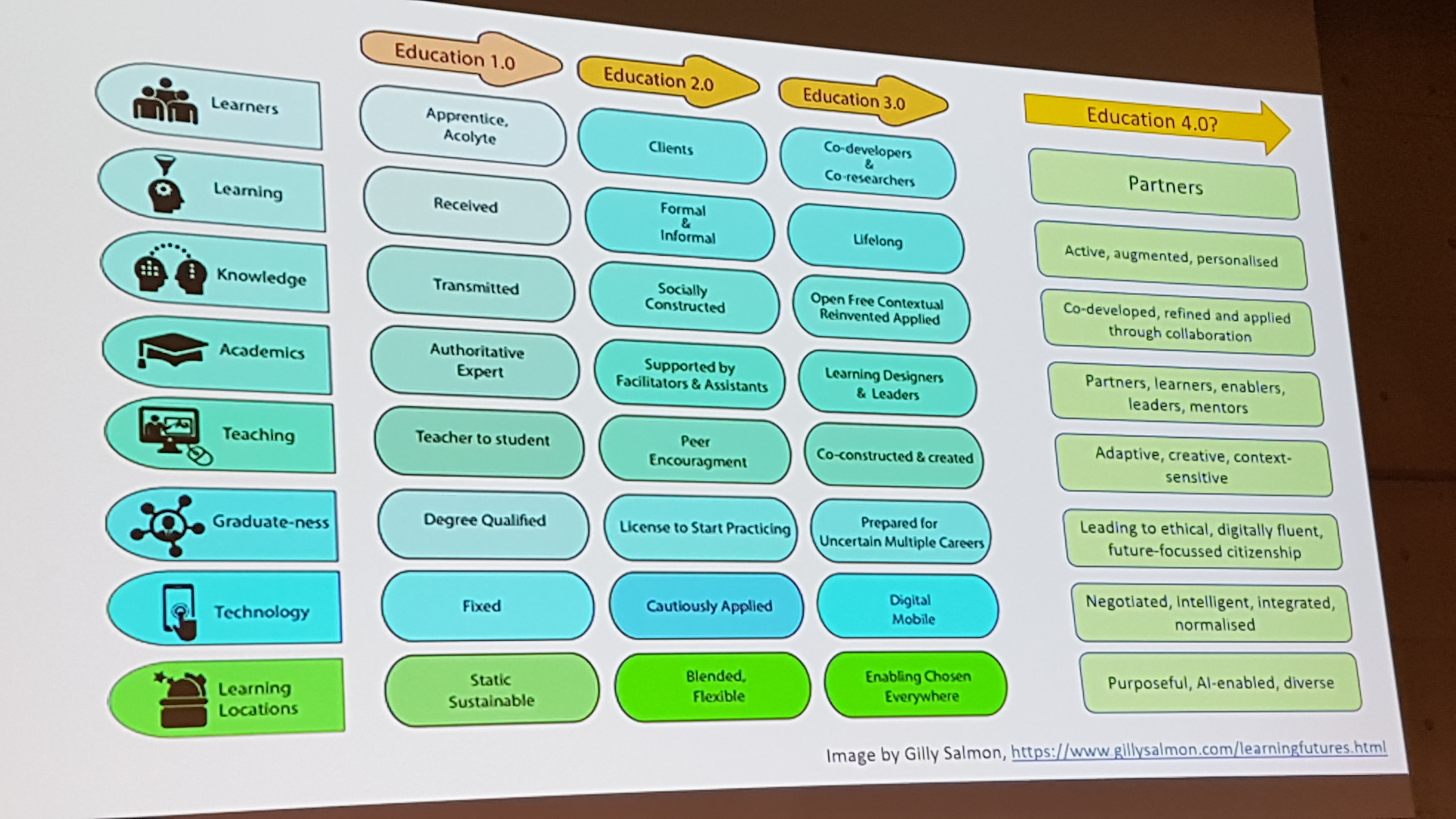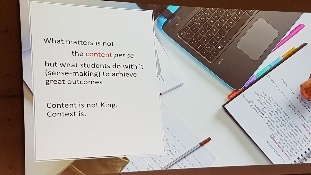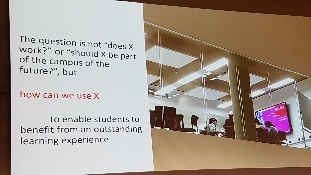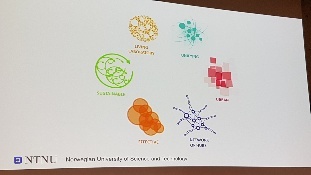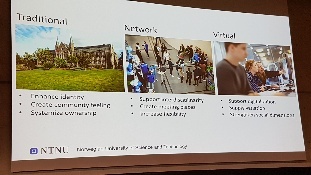EMREX user group Annual assembly Mon 3.6.
Workshops Tue 4.6.
Adding value to the University through business intelligence and analytics
- EUNIS Business intelligence (BI) SIG to be revitalized; BI topics also prominent in the conference program 2019
- Program committee: Elsa Cardoso, Pekka Kähkipuro, Kasper Fellkjaer Thoring, Xiaomeng Su, Gry Jordet Kibsgaard
- Participants in the SIG and workshop:
- Sharing experiences related to BI and analytics in university governance and decision-making
- Validating a lean maturity model to identify strengths and weaknesses in BI and analytics in an organization
- Example of a university BI solution from Ghent
- Insight by NMBU gathers PowerBI reports into a Sharepoint portal
- SIG goal description will be collaboratively rewritten
- Next physical meeting of the SIG in conjunction to EUNIS 2020 in Helsinki, quarterly virtual meetings planned
Active learning in interactive spaces
Outputs and photos from the ‘Active learning in interactive spaces’ workshop and the learning spaces tour are now available at the padlet here. You can find a range of additional resources including an editable version of our Learning Spaces Snakes and Ladders game board and a link to the UCISA VLE Review Toolkit.
Student mobility: progress made and challenges to beat
Architecting your future
Workshop participants listing
The workshop focused on building a view through a Capability model developed by the HEI community and collaborated and publicized by UCISA UK. It was also a foundation for the EUNIS EA SIG further work to maintain an European wide network to support Enterprise Architecture in HEI sector. Based on the outcome created by the participants during the hands-on session the EA SIG has published a EUNIS HEI Capability Canvas to support the HEI for more interoperability when designing their future digitalization efforts. Joining the newly founded EA SIG is free of charge and the details to join can be found at eunis.org web pages.
The workshop outcome is documented at the EUNIS EA SIG’s Team Drive as well as the presentations. Additionally we created a visualization of the manual post-it notes and mapped them to the UCISA model. We will call the outcome EUNIS HEI Capability Canvas (now in beta) to have a working name for our efforts. The map can be found here as a PowerBI web version that can be explored and sorted in many ways. Please note that the add-on from the workshop are only mapped and not validated.
Patrik Maltusch, Chair for EA SIG
How to hack a web application
EUNIS19 «IT Leaders Forum»
2018 IT Leaders Retreat Results
- In the last retreat one day was used for presentations and the second day for Design Thinking. Design Thinking: initial discussing around topics to find common ground. Set of solutions as a result.
- Design Thinking Workshop -approach will be applied probably to issues found through the survey conducted in spring 2019.
- Ideas welcomed from everyone - feedback needed to plan the next IT Leaders' Retreat.
- Trying to co-create an answer to what is digitalization. Organizations' digitalization strategies are for the most part not available online; it would be beneficial to compare them.
- EDUCAUSE is producing a review on digital transformation - input and articles welcome from Europe.
- There is a paradigm change going on: students moving from one institution to the next, not necessarily choosing schools but choosing countries where to spend some time. Need to have students and researchers to join IT leaders in thinking these.
- Process mapping / Customer Journey. Design Thinking is putting the customer first.
- Student Mobility task force could work on a process mapping workshop with students to identify the phases with which the students have difficulties.
- Possible area to work on: diversity, inclusion, personal development
- Supporting different capabilities. Models from the UK available. How to make an organization transform. Enterprise Architecture group could take this up.
- Need for personal development in change leadership.- how to best lead change
- States of Change, global initiative focusing on next generation of public innovation, practical guides etc. Focus is not on IT but on the services, IT is only a medium.
- CIO needs to be the facilitator for change.
- Wider input on Thurs from the community on what to work on together
- Håkan presenting what's been done at NTNU in his session. Governance of the digitalization programme covered, and ties to the leadership of the Univ. Transformation of the IT department. Stuck in operations but have to establish a higher set of skills. Less money for operations. Move towards soft IT.
Sigurd Eriksson, Deputy Director General of UNIT
- Next step: how to better integrate between the different services and sectors
- UNIT has worked on the whole digital student life cycle; application, studies, digital administration and after graduation phases.
- National Action Plan for Digitalization presented to the Norwegian. The following areas covered:
Peter Wittenburg, IT Leaders' Forum at the UNIT congress
- Two main strands towards convergence: FAIR principles, FAIR Digital Objects (these are complementary)
- FAIR principles are not a blueprint for building infrastructures. Need to do more when we want to realise federation of repositories.
- CoreTrustSeal for assessing repositories quality & performance
Berit Kjeldstad, Director of the Education Quality Division
- The message of the day has been that it's not about the technology, it is about teaching and learning. User focus!
- Pedagogical competence valued now more, seen beside research
- Not mature in the teaching processes, still under development when it comes to teaching excellence
- Learning Experience platforms: student active learning, mentoring, next gen learning platform, learning resource store, learning material production
- Digital Transformation Programme at every institution. Success factors listed include increased learning for and throughput of students, less time on administrtaion, custom space infrastructure, teaches/student support, service design - backstage coordination at the institutional level. Education quality devision and IT devision( ?)
Mariann ( ?)
- Recognized trends: Sensor technology, AI, robotics, etc. These should produce better growth learning, efficient quality, decision making
- Deakin Genie: an example of reuse of data, more personalized for the use of student.
- Focus on joint projects and what they require. Arbeidsportalen - en samhandlingsplattform
- Coordinating admission
Barbara Wasson, Director at SLATE (Center for the Science of Learning & Technology)
- SLATE, national research & competence center, was established by Univ. of Bergen and the Ministry of Education in -93
- Many different perspectives to learning analytics
- A lot of data important for learning but there is no access to it. How to get this, how to analyze it, how to visualize it.
- LA enables adaptive learning system.
- Predictive models/algorithms are situation dependent. Data literacy - strong need to work here
- 70% of student accept using data when asked
- National LA Symposium in October, open for anyone
Panel Discussion - John O'Brien, Raimund Vogl, Barbara Wasson, Berit Kjeldstad
- John
- Student experience in European context vs the American Student Success
- EDUCAUSE TOP 10 IT trends:
- InfoSec nro 1 for the past 4 years.
- Privacy a new comer on the list.
- Half the things relate to data
- Not making the progress we need to make when it comes to LA; good at gathering data but not as great at using it
- Leadership: integrative CIO with focus on inst goals and ability to talk about IT as a critical asset
- Students advocate for the things that we hope to do: they want us to use the data to help them learn.
- Raimund
- Open Science in the Action plan a good objective - maybe the most important one of the ones in the Norwegian Action Plan
- Barbara
- Students want more feedback. This ties in the assessment process. We focus on the final exam, but not so much on learning during the courses.
- Move to digital exams happened because students insisted this
- Decentralized digital competence in schools. Schools more digital than Univs.
- Berit
- Need to rethink our business model on how we do teaching
- What we should do to move forward in digitalzation?
- John: Diversity, Inclusion and Equity the most important
- Raimund: Senior IT staff co-opeted to certain functions within the Univ. - key factor for success.
- Barbara: Changes take time, and we often do not give enough time for this
- Berit: Culture is what has a great impact
IT-Leaders Forum continues in separate session 6.6.2019
(minutes below)
EUNIS Congress Wed 5.6.
Opening session
- Conference opened by Freddy Barstad, NTNU
- Gunnar Bovim, Rector NTNU: Knowledge for a better world
- Most important resource at universities are the students
- Universities need access to more data and better data
- Next 20 years will bring us more changes than even the last 20 years - this is exciting!
- "Never change a winning game" to "Why didn't we change quicker"
- Digitalization should be viewed as an important demographic opportunity. Scientific information available through open access, open data
- Dr. Raimund Vogl, EUNIS President
- EUNIS video (linkitetään)
- 25th EUNIS annual congress, 423 participants
- Next year, EUNIS2020 in Helsinki: http://www.eunis.org/eunis2020/
- Main theme of this year EUNIS: Campus for the Future
Keynote: Campus of the future – smart tools and information to support strategic choices, Prof. Alexandra den Heijer, Delft University
- At the core: what does the user of the future need, what political conditions prevail, which cost structure to follow, what architectural and technological choices to make
- Vision on the campus of the future
- Three models for the campus of the future : solid, liquid and gas state as metaphors
- A: traditional university (solid)
- B: network university (liquid)
- C: virtual university (gas)
- Campus management challenges
- To study at the physical campus is popular among students again, the need to focus and sociality as an examples of drivers
- Campus of the future is a study place, a workplace, a meeting place and a social place
- We need all the models A&B&C but the balance is shifting
- Using big data and smart tools
- Smart tools used to find empty spaces, to share class rooms, find free office workplaces optimizing use of meeting rooms, aligning building use and energy use etc. (source)
- More about managing the university campus:
P01: Leadership & management
IT Strategy in the Era of Digital Transformation: Case Higher Education, Pekka Kähkipuro
Digital strategy template to replace more traditional IT strategies; a model where digital capabilities provide the underlying structure.
A new approach in target-setting and in the way IT’s direction is defined. Digital capabilities needed to make sure that skills of the entire workforce are up-to-date
Example from Brunel (draft)
- Q: what about the hard work of implementing the strategy and getting the sponsorship and stakeholders on board early? A: the structure presented here attempts to address this engagement chanllenge, the top-most topics connect to the university-level strategy. You should use the language of the business, research, campus etc people to start a dialogue. Collaborative writing of the strategy at this level is part of the process.
Transformation of IT at Norwegian University of Science and Technology (NTNU), Håkon Alstad
All IT functions at NTNU were reorganized
Challenges: administrative cuts, more IT needs for education, cost of external work too high, difficulties in recruitment
- 30 external consultants working for NTNU, this used as a way to meet the high demand of IT experts
How to develop the It function for the needs of NTNU? University merger as a possiblity
Specialized government was done by the operator and the financial government by the economic department → need to consolidate these into the new IT function.
Digitalization programme with a yearly budget of around 10m€ https://www.ntnu.edu/digital-transformation
Need to transform: Moving 50 man-years of work from IT operations into development activities
Free seating areas utilizing sensors introduced, travel costs cut by 15%, reducing paper
Proposal for a digital maturity model for universities (MD4U), Rafael Molina-Carmona
A model to assess the maturity of digital transformation of a University, building on previous frameworks
Strategy, not technology drives digital transformation
Review of models for digital transformation in HEI sector
- For goals see e.g. Navitas report
Presenting a digital maturity grid for universities in relation to the strategy and value (MD4U)
Moving IT resources from management/innovation to governance and digital transformation will lead to the digital transformation and gain competitive advantage over other Univs
Q: has this been tested with universities and what kinds of results emerge? A: currently validating the model and its indicators (roughly 400), next year rolling into testing with universities in e.g. Latin america. The model will be translated into English
P02: Learning, teaching & student experience
Seeing the Universities’ digital environment through the eyes of staff and students (Ruth Drysdale)
https://digitalinsights.jisc.ac.uk
Video: Jisc's digital experience insights service
JISC providing surveys for HEIs, for students and staff, to investigate their insights on the digital environment
Why is it important to investigate people experience of the digital environment?
- Get some sense of impact of the return on investment
- Enhancing student experience
- Support decision making
- Engaging students and staff to the change
Some finding from the report 2018
- https://digitalinsights.jisc.ac.uk/our-service/our-reports/
- Students have access and are actively using technology on lectures more than before
- In the UK a lot of work has to be done regarding health and safety services
- Only about half of the students think that digital skills are important for their chosen career
- What should be done to improve the student experience? Better access to digital lecture materials and recording, easier access to academic resources, preparing students fro digital learning (meta skills)
JISC NUS Roadmap: http://repository.jisc.ac.uk/7390/1/31897h2_JISC_DEI_NUS_Roadmap_v4.pdf
Pictures of the presentation:
Digital Native Students’ learning expectations in Higher Education (Anne-Dominique Salamin, Nicole Glassey Balet)
Digital natives, Net Get, Millenials, Born Digitals, YZ Gen...
Professor's role as a facilitator
Some key findings
- Mobile phones are used even more
- Multitasking during classes has increased, instant messaging especially
- Professor's role as a facilitator, millenials double-checks the facts and supplements professors' data
- Preferred educational resources: videos, quizzes, simulations
- Preferred pedagogical models: lectures followed by exercises, workshops
Digital university: student perspective (University of Warsaw, Anna Pacholak)
Own survey on digital experience of students
- what digital improvements should be implemented? Go mobile, team work using social media, improvements to the LMS, encourage teachers to make materials more digitally accessible, dedicated courses with digital focus
- recommendations from students: more simulations, use of apps & games, short video tutorials more than long recording
P03: Software developement (2 presentations), Learning, teaching & student experience (1 presentation)
Next Generation By Design: The Next Generation Integration Scorecard project (Fancesc Santanach, Open University of Catalonia,Pro UOC)
Institute is a non-profit, collaborative member-based consortium focused on three fields of HEI: Collaboration, Control, and Student Success.
A new Digital Learning Environment for UOC
AppsAnyWhere in Thomas More (Dieter De Gendt, IT Program Manager, Thomas More University)
Project 2015 - 2018: Improve the learning experience, timetabling and asset management, support applications on managed and unmanaged devices and deliver application to the desktop quickly etc.
AppsAnyWhere - platform, where you have all your applications needed in your studies or work.
Photos and presentation slides:
P04: ICT infrastructure & security
Antti Mäki, Photos of the presentation slides: https://wiki.eduuni.fi/x/q5N_Bg
Managing the Cloud: The Role of University's central IT
Denise Dittrich, RWTH Aachen University
Similiar efforts as we have in Finland in connection to CSCIDEAPANKKI-55 - Getting issue details... STATUS and CSCIDEAPANKKI-23 - Getting issue details... STATUS
Started piloting with Microsoft, idea to inlcude other vendors also
Agreed to have a online meeting between german and finnish specialist on the issue
HPC on the Cloud - a Norwegian perspective
Einar Nass Jensen, NTNU
P05: ICT in research
JISC Open research hub presentation
The Jisc Open Research Hub and its role in open research infrastructure, Dr Tamsin Burland, Jisc
Research Data Management integrated in a Research Information System (CRIS), Ed Simons, Project Leader CRIS at Radboud University & President of euroCRIS Mijke Jetten,Head of Research Information Services, University Library.
Open Research Data: The current and future use of repositories by the Swiss research community, Dr. Markus von der Heyde
P06: OpenX & interoperability
Erasmus Without Paper Network from development to production, Janina Mincer-Daszkiewicz – University of Warsaw
Automation ofadministrative processes based on educational results, Marte Holhjem & Geir M. Vangen, UNIT
Driving open standards in Europe, Nynke de Boer, IMS Global Learning Consortium
Plenary
Blackboard
Key topics
- student experience
- Student expectations
- NGDLE: Next Generation Digital Learning Environment
- Accessibility
Keynote: The State of Digital Ethics in 2019: Excitement, Caution, and Hope, John O’Brien, EDUCAUSE
Digital ethics one of the most important issues going forward
Flurry of information brings with it a worry about the ethics - this is not a novel phenomenon
AI is not just technology - it's power, politics, and culture
Half the issues of EDUCAUSE TOP 10 IT list deal with data
Who will lead digital ethics? Government, employees, creative expression, higher education
Lack of representation of women and minorities which is not acceptable. EDUCAUSE has put in place a pledge for CIOs to take measures to improve this
P07: Leadership & management (2 presentations) Learning, Teaching & Student Experience (1 presentation)
Generation Z – New communication habits Special needs for service and communication in universities, Sarah Grzemski, Bernd Decker
Next Generation By Design: The Next Generation Integration Scorecard project, Francesc Santanach, Timo Väliharju, Jeff Merriman
Appsanywhere in Thomas More, Dieter De Gendt, Thomas More
P09: ICT infrastructure & security, Leadership & management
Implementing an Opensource Higher Education and Research ERP at the scale of a country or State. Case Study: The Malian Higher Education Information System (Jean Marc Coris, Stuart Mclellan)
ERP, enterprise resource planning
Target: National Scale Student Information System
Multinational consortium CINOP Global (NL) was chosen to lead the project
Project funding from the government of Netherlands and the World Bank
First phase: to enable online enrollent for 19 000 undergraduate students
Difficulties: goals not understood, limited internet access, resistance to change, geopolitical situation of the country...
Project was concluded successfully and the nationwide system was implemented, large impact on society in general also
Is there a Scandinavian model for MOOCs? Studying the effects of digital transformation in higher education in Norway, Sweden and Denmark (Cathrine Tømte, Vito Laterza, Rómulo M. Pinheiro)
CeDit, Center for Digital Transformation was established last year, sub-group on digital transformation on higher education, interdisciplinary group
Different theoretical approaches to MOOCs
Scandinavian HE landscape
- public, financial support, autonomy, reforms
- what kind of MOOC's this kind of landscape needs and wants
- Different recommendations made for MOOCs in Scandinavia
Scandinavian MOOCs?
- openness, scape up opportunities, strong government role, strong personal data protection tradition, context-specific geographical needs
- towards MOOCs 3.0
Next steps from the CeDit
- Network on Nordic MOOCs: workshops, policy briefs, academic publications
Campus for the future I: The Future Starts Now
Eleanor Magennis, Univ. of Glasgow
Connecting physical and virtual classroom
Examples from Engineer House, Research hub,
Not just fixing own premises, but linking with hospitals, research institutes etc
Need to have a clear view to whom you are designing for - the traits of Generation Z are different from the previous generations
Facebook got 150 million users in 5 years. It took telephone 89 years.
Should look into other industries for what they have done and we could adopt
Campus for the future I:“The future starts now”, Peter Schädel, Avixia
Digital learning environments: do you need to review, replace or refresh? (Panel), Gill Ferrell, EUNIS
Developing the campus of the future: a game of snakes and ladders, Gill Ferrell, EUNIS & Eleanor Magennis, University of Glasgow
EUNIS Congress Thu 6.6.
InfoSec SIG Meeting at 11.00 - 12.30 , room R92
Introduction to SIG Information Security
P10: Leadership & management
Welcome Aboard! Supporting the Process of Integrating New Staff with Onboarding Tools (Dominik Rudolph, Christopher Burgholz, Raimund Vogl)
Onboarding process
Challenges for universities
- complex structures, numerous technical systems, lack of contact persons, lots of information and different sources, many foreign employees
→ on boarding in general difficult
solution of WWU Munster: staggered information flow with different tools to reduce complexity, motivation interactive approach with gamification elements
The recruitment challenge and the apprenticeship at IT-Centers of German universities (Kerstin Bein, Maja Ruby, Rainer Bockholt)
Human Resource Development and Inhouse Staff Training (Inga Scheler, Hartmut Hotzel)
Main focus areas:
- change structures - hardware, software and governance, cloud opportunities
- HR development
Top concerns
- need of regrading the labour agreement in the public sector, problems that employees do not stay in public organisations because low income level
- Empoleeys need to increasing knowledge, communicative comperencies
CFTF-3: Digital learning environments for the future (Plenary panel)
Sally Jorjani, Farzana Latif and Julie Voce
Moving to open source, Edinburg Napier University changes from a commercial VLE to Moodle
University of Sheffield, changed practices without changing their VLE: refreshing branding, student ambassadors, new ways of using digital technology
IT-Leaders Forum (continued)
Participants from Norway, Finland, Germany, UK, Spain,
Tord Tjeldnes, Univ of Agder: member of UH-IT and NUAS-IT
Norway (number of participants in the network of CIO's?)
- 10 universities
- 12 university colleges
People brought into the center before technology
IT department is a international department in an university as it may have very many nationalities working as a skilled it experts where as many other departments require local competencies
UH-IT (higher education IT group) consisting of IT leaders and people in similar positions, has a mandate for cooperating and sharing knowledge
Expert committees on research, education, management & support service, and infrastructure & data advice, architecture , and information security & data protection give recommendations to the digitalization board
User groups yet to be formed but recognized as important
Uninet now handles only the infrastructure side
Digitalization strategy was set by the ministry two years ago (this might not be available in English). The action plan compiled by UNIT (English version will be shared) is a tool for implementing the strategy, and was released earlier this week. It is not just for Unit, but for all Norwegian Univs.
Common services that the IT leaders work together on:
- One IAM (identity access management system) for the whole of higher education
- Integration architecture
- Client operation; desktop as a service worked on and possibly ready in 2-3 years
- Microsoft licensing. Renewing their PDI-model
- Businessportal to serve for example nursing students who have internships/working periods included in their studies
- Tear one services and Office 365 management. There is a forum for these professionals
- Student system renewal
- Best practices
BOTT
- 65% of the sector represented. HR,
TSD - services for sensitive data. Providing secure e-infrastructure. Tord hopes to make this a national shared service. uio.no/tsd https://www.uio.no/english/services/it/research/sensitive-data/tsd-video
Working together on shared services, competing for the best researches
Freddy Barstad, NTNU, EUNIS board member
Survey geared for CIOs conducted in spring 2019, 32 respondents
Presentation
The concerns pointed out in the survey are similar than the ones recognized in the US.
IT Security noted as most important at the moment.
There is increased interest in Research Data Management at least in Norway, but this did not score high in the survey.
Adopting commercial cloud services used to be of high importance in Norway
Badges and micro-credentials not picked up yet, but might increase in importance in the following years
There will be another survey next year, the result of which will be covered in EUNIS2020 congress. Discussion with EDUCAUSE around the results.
IT centralization scored low perhaps because the centralization projects have already been carried out
IT staffing still a critical topic for the industry, and should be in the top 5 topics for CIOs to discuss together. Challenges in
Research Data Management an upcoming thing
Digitalization could include more business related things, like badges and micro-credentials. Perhaps still not individual areas but managing the whole thing.
Pekka Kähkipuro, Univ. of Brunel, EUNIS board member
About the most important topics based on these analysis
Top 5 technical topics
based on the quite technical themes in the questionaire
IT Security
Digitalization
Research Data Management
Analytics (Learning analytics, Business intelligence / Machine learning)
Student mobility (eAssesment, MOOCs, Badges and microcredentials)
Soft side of digital transformation
based on the discussion about the results: "the new continent on the other side of the sea"
Culture
- One of the most important road blocks
Change Management
Legacy management
IT reneval & agility, user centricity, organization
- Transformation of the IT organization it self
IT Leadership
Demand management
Broader co-operation
Raimund Vogl, Univ. of Münster, EUNIS board member
ERAI and joint publication on what we should do together. Inviting people to contribute to this.
Good ideas for future IT leaders’ workshops / retreat
Outcomes of the discussion topic for the next IT Leaders’ Retreat.
Survey circulated through the national CIO networks to get more answers and ensure quality.
Action point to formulate these topics a bit further to make them into an article for the EDUCAUSE magazine
The next IT leaders retreat perhaps In Iceland, May 2020? Back-up plan to have it in conjunction with the Rectors’ conference in Malaga 23-24 April 2020
ORACLE: How Oracle supports Digital Transformation in Higher Education
David Ebert
Many disruptive forces affecting higher education: globalization, changes in workforce, etc.
From institutional focus to consumer focus - what do the students need
Database the most known product by Oracle, but also many others applications
Oracle HCM Cloud presented.
Predictive Analytics, advanced reporting
More consumer oriented viewpoint than perhaps in the past
Oracle working on a brand new student information system based on cloud technology.
Microsoft: Artificial Campus and democratization of cloud services
http://www.eunis.org/eunis2019/sponsor-sessions/#microsoft2
Parallel session 18 ICT Infrastructure & Security
MyAcademicID: a European Student eID Scheme for Higher Education
Victor Aquilar (EUF) and Jean-Paul Romegas (Cnous)
European Student card initiative to cover existing projects in the area: https://europeanstudentcard.eu/
My Academic ID: Two large networks, eIDAS and EduGain to be connected, case Swedish research council
- Biggest challenges: what identifier to use for institutions, and how to deploy the IDs = create an ID for all students
Supporting Student Mobility — news from the EMREX network, Tor Fridell
ESMO Project Results: Minimising Federation Costs for Boosting Service and Data Convergence
eIDAS eID & eSignature for HEI/EDU Applications, Hermann Strack, Guido Bacharach
P14: Leadership & management, Learning, teaching & student experience
Guru - Secure Exam Paper Management and Validation (David Molley)
https://gurudevelopments.com
Management: management of physical exam papers
Secure: Maintaining and enhancing security
Validation: Quality process, standards for exam papers
Examination process a lot more complicated than it seems
→ Guru at the center of all exam management
Front page: generating an exam, external examiner final report, external examiner nomination, analytics, utilities
Cheating Detection: Identifying Fraud in Digital Exams (Bastian Küppers, Julia Opgen-Rhein, Thomas Eifert, Ulrik Schroeder)
Ensuring the same security as with paper exams, problem increasing as BYOD exams are used even more
- students' devices untrusted platform, more difficult to control
Solutions?
- In-situ attribution
- e.g. identifying the author of the examinations, typing patterns, other patterns of a student
- A-posteriori attribution
- Analysis of the available log data produced during the exam
- Process mining, wavelet/time series analysis, author verification
- using previous materials of a student to learn patterns of styles etc.
- BYOD as a way to enable e-assessment on a broader base
- Digital exams cheating detection requires an other type of solutions that paper exams → combination of cheating prevention during and after an exam
Conduction of Exams: Analogous vs. Digital (Bastian Küppers, Thomas Eifert, Ulrik Schroeder)
- Differences:
- Preparing and exam: only small differences usually
- Conduction: Digital exams improve timing, handling of technicalities, ways of posing and answering questions
- Grading: improved readability, digital tools for correction, automatical grading / correcting, easier to track grades
- Security Threats
P15: Leadership& management, Learning, teaching & student experience
Letting Students Design their Own Dashboards - Learning Analytics from a Student's Perspective, Alena Droit, University Osnabrueck
Paper #: 60 View extended abstract
139 students taking part in the Business Intelligence course which contained LA Case Study and designing of Student's Own Dashboard
P16
Poland National Omega-PSIR = IR+CRIS+RPS
IR is a kind of library system for full texts and digital preservation.
CRIS is a research data system covering research activities and is run by administration.
RPS covering all research activities - profiles and social network functions and is run by scientists
Omega-PSIR is open AIRE interoperable
Bridge of Knowlegde an Internet platform for R2R and R2B (Gdansk University)
The portal support collaboration between researchers and entrepreneurs
Open APIs
Co-operation: IT, librarians and research office
Education and helping researchers
Competence center in Open Science
The Sciebo.RDS (Münster)
The Goal: Easy RD management and easy to use
As a service for scientists (customer oriented)
Quality Criteria: metadata, quality control
Digitalization as a driver
Optimized RDM processes
Interoperability with the working environment
Modular architecture
Digital preservation capability
Reusability and sustainability
Pilot phase: politics, research processes
RDM is so important in the digital age
Professional RDM will be the norm
The Sciebo.RDS presentation was so interesting
Research Data Management and computer centers role and co-operation (Umea)
It is all about rust: security, backups, accessibility, affordability, support, GDPR, diversity, integration to open data suppliers...
Importance of data management plans
Service point for researchers
The key is collaboration
World class research demands world class IT
Keynote: Education 4.0 – looking to transform teaching for 2030 and beyond, Paul Feldman
Open Athens as SSO
Key focus on data preservation
Most needed capabilities to gain education 4.0: virtual reality, guidance and mentoring, micro credentials, capability to reinvent ourselves.
Need to vision the future of teaching and learning and reinvision on a blank state, without constraints
An aspect of AI: how to preserve the AI that created a piece of research?
EUNIS Congress Fri 7.6.
Keynote: Evolution of University Learning Facilities on Campus (Technical university of Denmark)
Transforming DTU - 3 main dev. areas:
- Life science center
- Science and research
- Teaching and learning environments
Side session (Ari)
Ardoq EA Tool demo/presentation by NTNU (Ole and Per)
Ardog is an excellent and modern modeling enterprise architecture tool! Even rookies can use it.
Decentralized verification infrastructure for documents anchored to blockchain
Mirko Stanić, Matija Pužar
Less change on data breach when there is no central repository where data is stored
Blockchain does not guarantee the authenticity of the issuer, only the immutability of the records - garbage in, garbage out
Accreditation of the issuers is out of scope
Requirements for verification software are high, but there is need for fewer resources such as helpdesk etc. needed in the organization
EUNIS 2019: Log analytics using ELK stack on Cloud platform
Jordi Cuní, Estefania Muñoz
Collecting log information on who accesses personal data
Dashboard for visualizing analytics data
Dashboard being developed for different modules
Open-source
RAD-on: An integrated System of Services for Science – Online Elections for the Council of Scientific Excellence in Poland
Jarosław Protasiewicz
Components: data warehouse, web services, metadata services, and personal data (including a tool for online elections)
Email with a URL and a token needed for verification and allowing access for the voting card
Software used in the future perhaps
Project Digital Business Travel Management
Christoph Arndt, Freie Universität Berlin
Summary: P21: Leadership & management (Business Process Reengineering)
Atomi – Automated Student Affairs Office Service for Digital Certificates and Signatures
Juha-Pekka Pihlajakoski, OAMK & Jaakko Rannila, Lauri Stigell, Studyo
Summary: P21: Leadership & management (Business Process Reengineering)
Putting learning at the forefront of everything: Active Blended Learning as Northampton’s new normal
Keynote: Prof. Alejandro Armellini
Abstract: http://www.eunis.org/eunis2019/keynotes/#key-armellini
Open material and guides: https://Northampton.ac.uk/ilt
Learning 1.0 - 4.0
Developing a campus for the future
Keynote: Merete Kvidal
Abstract: http://www.eunis.org/eunis2019/keynotes/#key-kvidal
The key to developing a campus for the future are people
The key element's of every campus for the future:
Closing remarks & Best Oral Presentation Award
EUNIS 2020
- 10-12.6.2020 Helsingissä
- Esittelyvideo

